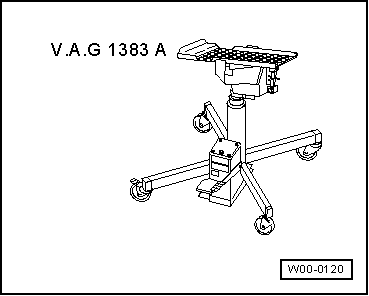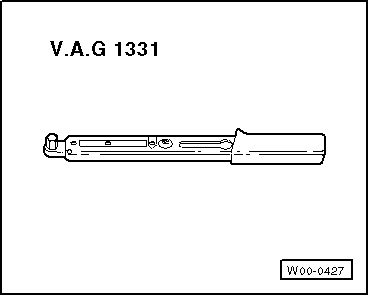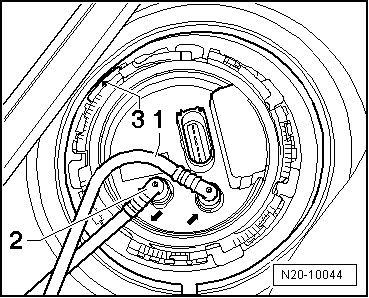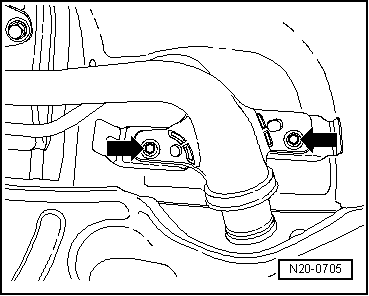| t
| Hydraulic jack -VAG 1383A-, see equivalent → Anchor |
| –
| Note safety precautions before starting installation work → Chapter. |
| –
| First check whether a coded radio is fitted. If so, obtain anti-theft coding: |
| –
| With the ignition switched off, disconnect battery earth strap. |
| –
| Extract the securing bolt of the fuel tank cap unit and remove the unit. |
| –
| Drain fuel tank, clean fuel filler and surrounding area. |
| –
| Remove cover from fuel delivery unit. |
|
|

|







